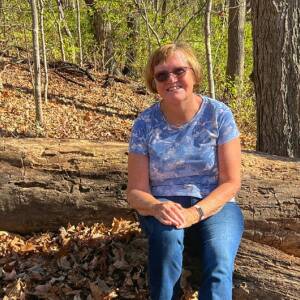English Garden
Saturday
Yesterday afternoon we drove up to north east Ohio, east of Akron with our pop-up camper for the 3-day July 4th weekend. Being a holiday weekend the campsite was full and the remaining two pitches she originally showed us were very disappointing - the one was near the pool (so rather noisy) and also rather cramped, the other one was sandwiched between two old scruffy static campers that looked as if they had been abandoned, and again rather cramped. She must have seen my look at Roger, and she said she might be able to do some rearranging and disappeared into the office. After a while she reappeared and showed us a third site which was better. We were still between two static campers, but these at least were occupied, and the one we were facing had loads of bird feeders, including several hummingbird feeders, which attracted quite a variety of birds which we enjoyed watching.
This morning Roger and I cycled some of the Ohio Erie towpath trail. The Ohio and Erie Canal was constructed in the 1820s and early 1830s. It connected Akron in Summit County with the Cuyahoga River near its mouth on Lake Erie in Cleveland in Cuyahoga County, and a few years later, with the Ohio River near Portsmouth, Scioto County, and then connections to other canal systems in Pennsylvania and Ohio. The canal only had a relatively short active life however, as it lost much of its business to the railroad in 1861. 1913 saw the end of the canal after critical sections were destroyed by flooding. Along with the our local Little Miami Scenic Trail, the towpath is one of the two most popular trails in Ohio. It rivals the Little Miami in total length as well. The entire section of canal corridor that's being developed for trail use will be approximately 100 miles long and extend from Dover (just north of New Philadelphia) to Lake Erie in Cleveland, when completed. However there are numerous missing sections at present. By the time we returned to the campsite at lunchtime, Jen and Jason had already arrived.
In the afternoon the four of us went to Stan Hywet Hall in Akron. This was originally the country estate of F.A. Seiberling who founded The Goodyear Tire & Rubber Company in 1898, naming it after Charles Goodyear, the inventor of the vulcanization process for rubber. Like many of his industrialist peers, F.A. Seiberling had architectural aspirations. Between 1912 and 1915, he and his wife, Gertrude, built their country estate and named it Stan Hywet (Old English for stone quarry) the property's most prominent natural feature. The Manor House is one of the finest examples of Tudor Revival architecture in America. The Seiberlings chose Charles S. Schneider as their architect and the three of them travelled to England and visited well-known homes including Ockwell’s Manor in Berkshire, Compton Wynyates in Warwickshire and Haddon Hall in Derbyshire, influencing the design of Stan Hywet. The beautiful gardens were designed between 1911 and 1915 by renowned American landscape architect Warren Manning. The English Garden, shown here, was redesigned by Ellen Biddle Shipman in 1929 (and restored in the 1990s) and is one of the only Shipman gardens that is open to the public.
One year ago: Mother and young

Comments
Sign in or get an account to comment.


